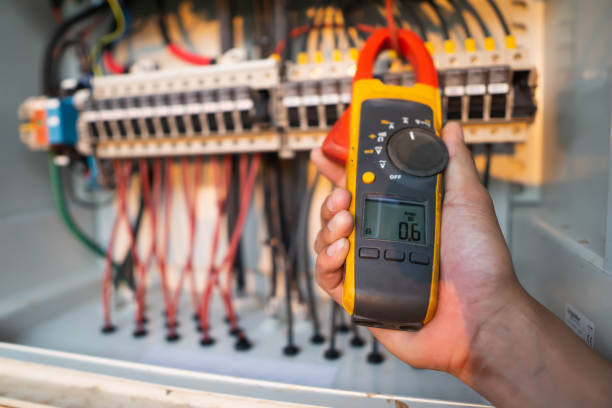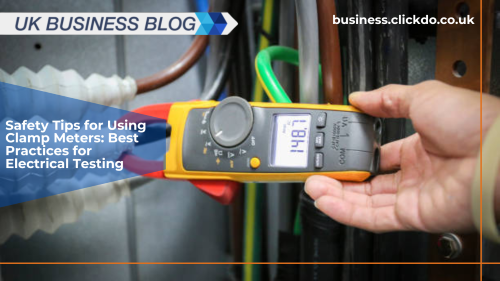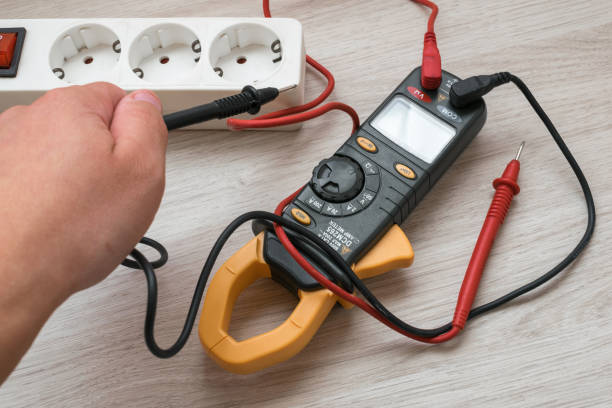Table of Contents
In the world of electrical testing, clamp meters are essential tools used by professionals and enthusiasts alike.
These devices offer a convenient way to measure electrical current without breaking circuits or directly contacting live wires.
However, like any electrical tool, clamp meters can be hazardous if used incorrectly. This article explores essential safety tips and best practices for using clamp meters effectively.
Introduction to Clamp Meters

Clamp meters, also known as clamp-on ammeters or tong testers, are versatile instruments designed to measure electrical current flowing through a conductor. Unlike traditional multimeters requiring direct contact with wires, clamp meters can measure current by clamping around the conductor, making them safer and more convenient for various electrical testing applications.
Importance of Safety in Electrical Testing
Before delving into the specifics of using clamp meters safely, it’s crucial to understand why electrical safety is paramount. Working with electricity poses significant risks of electrical shock, burns, and even fatalities if proper precautions are not followed. Therefore, adhering to safety guidelines not only protects the user but also ensures accurate and reliable measurements.
Safety Tips for Using Clamp Meters
- Inspect the Clamp Meter: Before each use, inspect the clamp meter for any signs of damage, such as cracks in the casing or exposed wires. Using a damaged meter can lead to inaccurate readings or electrical hazards.
- Use the Correct Meter for the Job: Ensure that the clamp meter you are using is suitable for the type of electrical testing you intend to perform. Different meters have varying ranges and capabilities, so using the correct one is essential for accurate measurements and safety. When dealing with varying currents, an AC DC Clamp meter can offer flexibility and precision, making it a valuable addition to your toolkit.
- Verify Meter Calibration: Periodically calibrate your clamp meter according to the manufacturer’s instructions or industry standards. A poorly calibrated meter can provide incorrect readings, leading to potential safety hazards or faulty electrical diagnosis.
- Understand the Environment: Assess the environment where you will be using the clamp meter. Ensure it is dry, well-lit, and free from any potential hazards such as water or flammable materials. Working in a safe environment reduces the risk of accidents.
- Inspect the Cables and Leads: Check the condition of the test leads and cables before each use. Look for frayed wires, damaged insulation, or loose connections. Faulty leads can compromise the accuracy of measurements and pose electrical hazards.
- De-energize Before Testing: Whenever possible, de-energize the circuit before testing with a clamp meter. This minimizes the risk of electrical shock and ensures safer working conditions. Use appropriate lock-out/tag-out procedures if working on live circuits is necessary.
- Positioning the Clamp Meter: Properly position the clamp meter around the conductor you are testing. Ensure the jaws are fully closed around the conductor to obtain accurate readings. Avoid placing the clamp meter over multiple conductors simultaneously, as this can affect measurement accuracy.
- Avoid Contact with Live Parts: Even when using a clamp meter, avoid unnecessary contact with live electrical parts. Always assume that conductors are energized until proven otherwise. Use insulated tools and wear appropriate personal protective equipment (PPE) as needed.
- Read the Manufacturer’s Instructions: Familiarize yourself with the specific operating instructions and safety guidelines provided by the manufacturer. Different clamp meters may have unique features or precautions that users need to be aware of.
- Dispose of Old or Faulty Meters Properly: If a clamp meter becomes damaged beyond repair or reaches the end of its operational life, dispose of it according to local regulations and manufacturer recommendations. Improper disposal can pose environmental and safety risks.
Best Practices for Electrical Testing
Aside from safety precautions, adopting best practices enhances the effectiveness and reliability of electrical testing with clamp meters:
- Record Measurements: Maintain a record of measurements taken during testing for reference and comparison purposes.
- Perform Regular Maintenance: Clean and store clamp meters properly after each use to prolong their lifespan and ensure reliable performance.
- Stay Updated: Keep abreast of industry standards, technological advancements, and safety regulations related to electrical testing.
Conclusion
Using clamp meters for electrical testing offers convenience and accuracy, but safety should always be the top priority. By following these safety tips and best practices, users can minimize risks, ensure accurate measurements, and maintain an electrically safe working environment. Remember, electrical safety is everyone’s responsibility, and proper training and adherence to guidelines can prevent accidents and injuries in electrical testing scenarios. Always prioritize safety when working with electricity and electrical testing equipment like clamp meters.
Author Profile
- Passionate content creator, contributor, freelance writer and content marketing allrounder.
Latest entries
 FeaturedJuly 31, 2025How Directors Can Earn £1,000 Tax-Free From Their Own Company
FeaturedJuly 31, 2025How Directors Can Earn £1,000 Tax-Free From Their Own Company FeaturedMay 28, 2025Government Unveils Major Crackdown on Tax Avoidance – Up to £6.5 Billion Could Be Reclaimed by 2029
FeaturedMay 28, 2025Government Unveils Major Crackdown on Tax Avoidance – Up to £6.5 Billion Could Be Reclaimed by 2029 FeaturedMay 9, 2025Oxford Landlords Face Tax Hit as Furnished Holiday Let Benefits End in April 2025
FeaturedMay 9, 2025Oxford Landlords Face Tax Hit as Furnished Holiday Let Benefits End in April 2025 FeaturedApril 28, 2025Rising Tax Pressures Push Directors to Rethink Income Strategies for the New Tax Year
FeaturedApril 28, 2025Rising Tax Pressures Push Directors to Rethink Income Strategies for the New Tax Year






